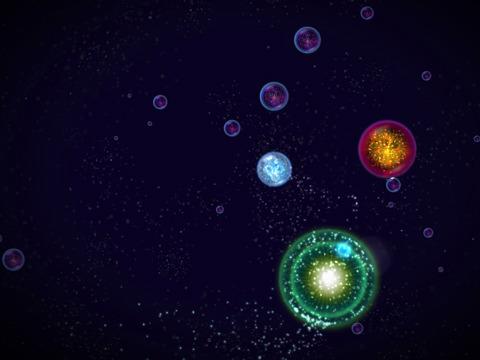- Wondering how to get Monopoly GO! free rolls? Well, you’ve come to the right place. In this guide, we provide you with a bunch of tips and tricks to get some free rolls for the hit new mobile game. We’ll …
Best Roblox Horror Games to Play Right Now – Updated Weekly
By Adele Wilson
Our Best Roblox Horror Games guide features the scariest and most creative experiences to play right now on the platform!The BEST Roblox Games of The Week – Games You Need To Play!
By Sho Roberts
Our feature shares our pick for the Best Roblox Games of the week! With our feature, we guarantee you'll find something new to play!All Grades in Type Soul – Each Race Explained
By Adele Wilson
Our All Grades in Type Soul guide lists every grade in the game for all races, including how to increase your grade quickly!
Putting Osmos in your pocket: An interview with Hemisphere Games
When Osmos first hit desktops last fall, gamers around the world rejoiced in its cosmic “big eats little” gameplay. Since that time the game has appeared on a number of platforms, including PC, Mac, Linux, iPad, and as of today, the iPhone.

When Osmos first hit desktops last fall, gamers around the world rejoiced in its cosmic “big eats little” gameplay. Since that time the game has appeared on a number of platforms, including PC, Mac, Linux, iPad, and as of today, the iPhone.
Gamezebo recently had the chance to speak with Lead Game Designer Eddy Boxerman and Lead iOS Programmer Aaron Barsky of Hemisphere Games about their experiences in bringing Osmos to Apple’s popular line of iDevices.
You began development of Osmos for the iPhone prior to Apple’s announcement of the iPad. Once you got your hands on the new device, however, focus quickly shifted to a release of Osmos on the bigger screen. What sold you on releasing the iPad version first?
Aaron Barksy: We knew that with its large screen, the iPad would be a great device for Osmos. But as we didn’t have any income or funding while developing Osmos, and we were starting to get sick of frozen perogies for dinner, we didn’t think we could afford to target a device whose success and market share was still in doubt. Fortunately, we were contacted by a business manager at Apple who was interested in seeing Osmos ported to the iPad in particular. And while we never had an explicit agreement, we hoped that if we could please the great Apple gods, they might feature Osmos. The gamble payed off, and Apple featured Osmos as iPad App of the Week on the U.S. store, without which it might still be wallowing in obscurity in the depths of the 200,000-deep pile of App Store apps.
Eddy Boxerman: The reasons were twofold: we wanted to put our best foot forward first (iPad = sexier), and yes, the interest from Apple was a big motivation.
Now that you’ve had a chance to enjoy Osmos with both a mouse and a touch screen, which of the two control methods do you prefer?
AB: I love the touch screen for playing Osmos. The mouse just moves the cursor to the point where you are going to eject your mass. With the touch screen you can just leap directly to that point. But I still play a lot of Osmos on my Mac, because you can’t beat the joy of playing on a 24″ screen with the music routed through your full stereo system.
EB: I never would have thought this when development started, since Osmos seemed so perfectly suited to the mouse, but I think I prefer the touch controls now. They both give excellent control, but the touch controls are just… sexier. But what Aaron said is true. At PAX we set up Osmos on a 42″ screen, and I was astounded at how gorgeous it looked.

Osmos was your first opportunity to play around in Apple’s portable gaming sandbox. How did you find the experience?
AB: We thought the touch screen would be a perfect fit for Osmos, but we didn’t know whether you could really have a satisfying game experience on your phone or iPod. Osmos has a lot of particle simulation, transparency effects, and physics simulation, and we didn’t know whether the devices would be powerful enough to even run Osmos. Our first prototype showed that the devices would probably be powerful enough, but just barely. We had to spend a lot of time optimizing key sections of our code to make it work.
Music is a key part of Osmos, and as the iPhone and iPod touch started as portable music players, we expected music support to be easy. It turns out that the iPhone only has hardware acceleration to play a single song. As we wanted to mix multiple tracks and pitch shift the music as the player alters time, the music also needed a lot of optimization.
In the end, we were pleasantly delighted by how well Osmos works on the small screen. If you’ve played Osmos on the PC or on the iPad, the iPhone seems so small when you first hold it in your hands. But it’s amazing how quickly you get sucked inside the Osmos Blobiverse and feel like you’re in a space far larger than your phone.
Osmos features OpenFeint integration, but unlike most OpenFeint-enabled games, the integration is so subtle that a player may not even notice it unless they go looking for it. In fact, a player needs to access it from the main menu to even enable it. Why the covert implementation?
AB: OpenFeint gives players the ability to share achievements through Twitter and Facebook and find out what games their friends are playing. OpenFeint’s easy to use toolkit meant we could focus our time on developing the game, instead of replicating social networking features. But we felt that the default OpenFeint integration – popping up before you’ve even played the game – was a little impolite. And just like a popup ad, or a registration form to access a website, we felt that players would find this gatekeeper an annoying barrier and take away from the excitement of playing Osmos for the first time. So we simply wait until the player earns their first achievement, and offer the OpenFeint service at that time.

Are there any plans to develop a new game for iDevices? How about just a new game regardless of platform? What’s next for Hemisphere Games?
AB: The next game is a regular topic at the pub, but we’re still in the ideas stage. The financial success of Osmos will determine whether we can afford to take some radical chances with the next game, or whether we’ll be condemned to a life as embittered programmers developing business software.
EB: What he said. 😉 There’s also discussion about adding multiplayer to Osmos.
Osmos may have been the breakout indie hit of 2009, but there are countless great PC games made by independent developers deserving of our attention. If you could pick one other indie gem to bring to the App Store, what would it be?
AB: Picking just one would be very painful. But luckily great games like Eliss, Drop7, and Blockhouse have already been brought to the App Store by their respective developers. I really hope Machinarium will be coming to the App Store. The gorgeous setting, great music, fun and funny adventure, and one-touch interface make it a natural fit.
EB: I’d love to see some drawing games like Max and the Magic Marker or Crayon Physics come to the iPad, and a gesture-based game like Rose & Camellia would be perfect on the iPhone. Oh wait… that’s three. 😉
More articles...
Monopoly GO! Free Rolls – Links For Free Dice
By Glen Fox
Wondering how to get Monopoly GO! free rolls? Well, you’ve come to the right place. In this guide, we provide you with a bunch of tips and tricks to get some free rolls for the hit new mobile game. We’ll …Best Roblox Horror Games to Play Right Now – Updated Weekly
By Adele Wilson
Our Best Roblox Horror Games guide features the scariest and most creative experiences to play right now on the platform!The BEST Roblox Games of The Week – Games You Need To Play!
By Sho Roberts
Our feature shares our pick for the Best Roblox Games of the week! With our feature, we guarantee you'll find something new to play!All Grades in Type Soul – Each Race Explained
By Adele Wilson
Our All Grades in Type Soul guide lists every grade in the game for all races, including how to increase your grade quickly!







